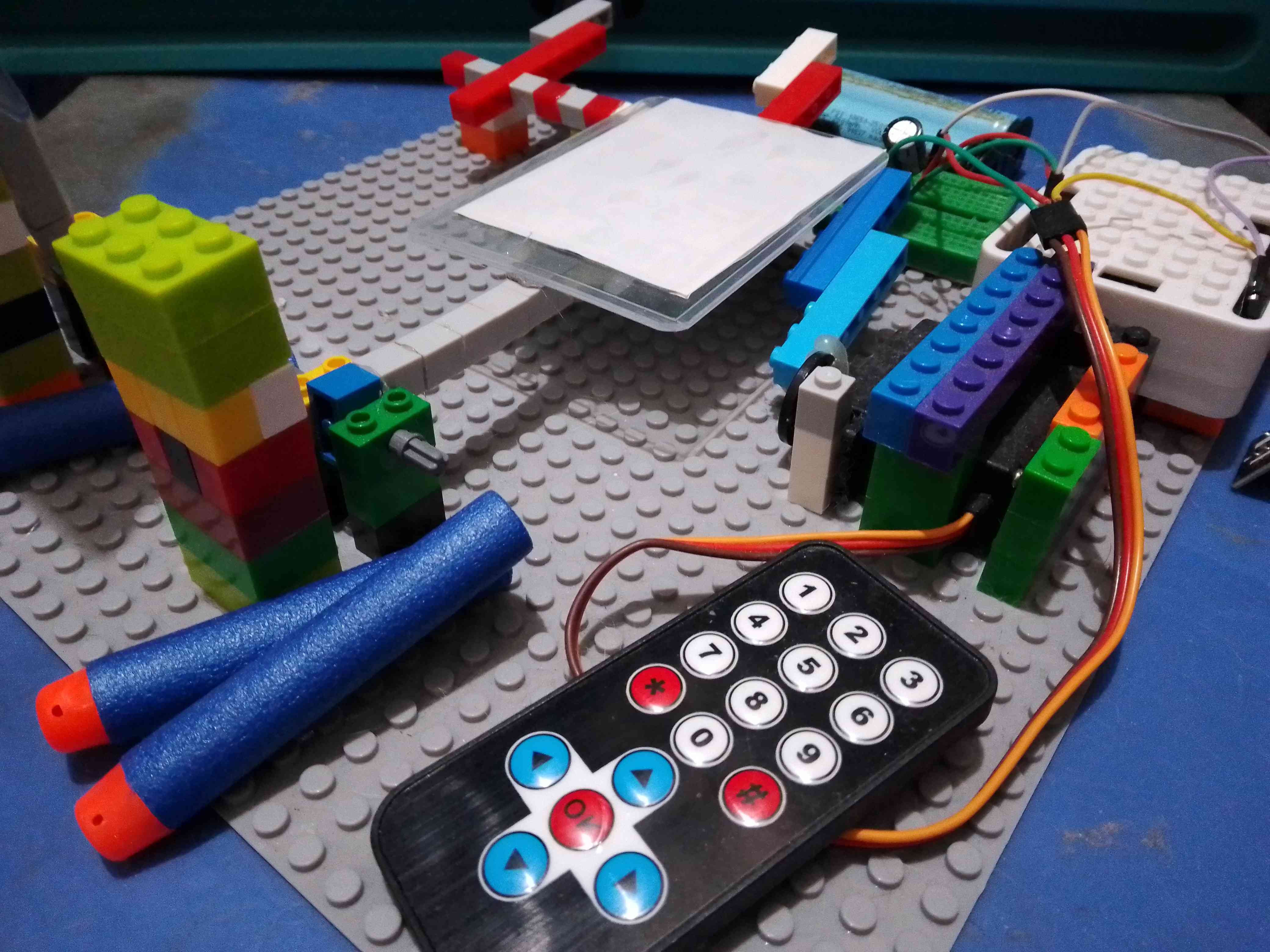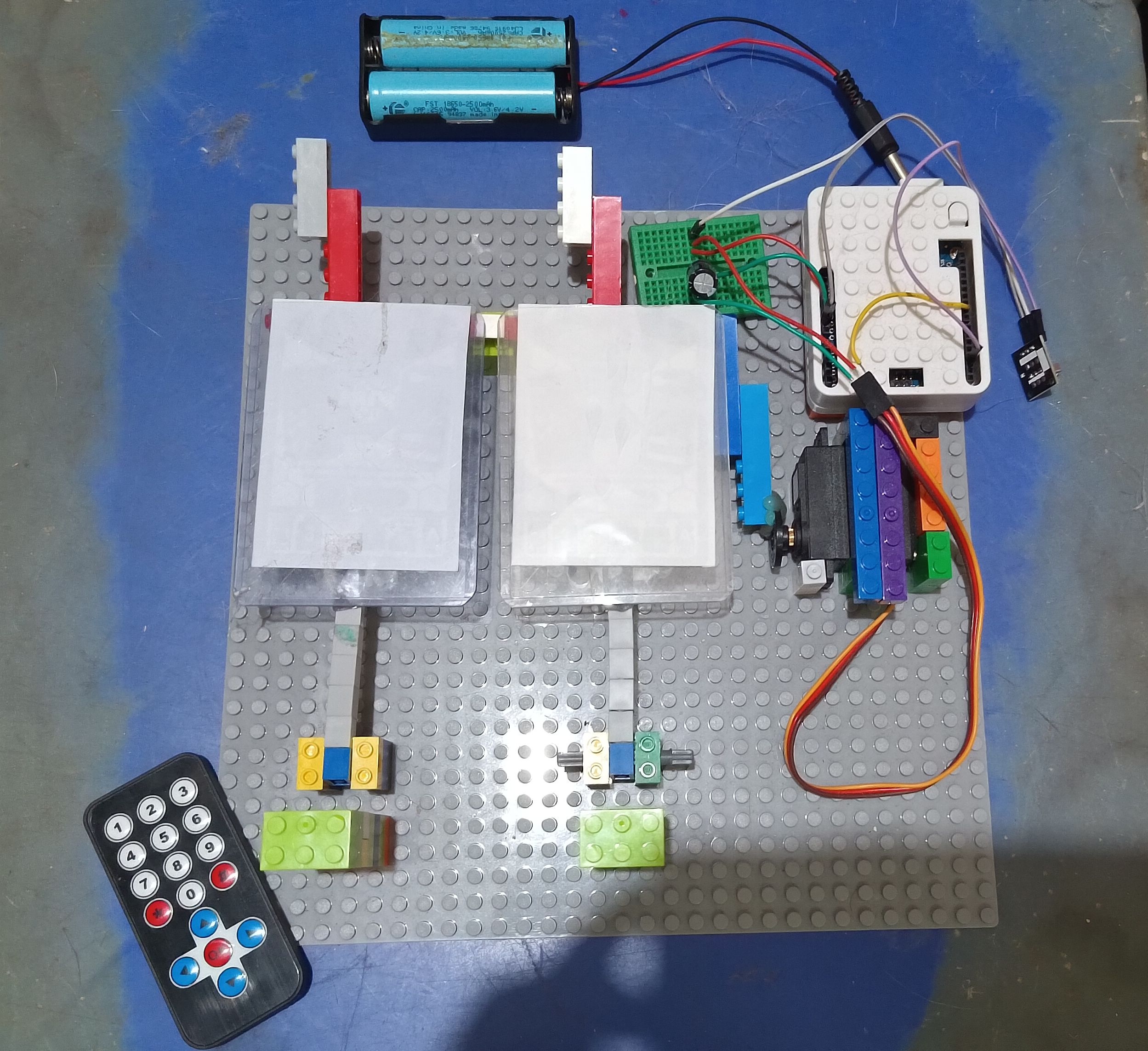
Remote-controlled "Nerf" targets
We wanted a semi-automated targeting system for foam blasters, so we built one with electronics and Lego-compatible blocks! The targets would raise themselves upon the press of a remote control's button 🎛️
Check out the video demo below:
Parts
Electronics
- Arduino Uno
- 6g servo motor
- TL1838 IR receiver module
- IR remote
- 470uF capacitor
- Mini breadboard
- 18650 lithium-ion batteries x2
- 2-cell 18650 battery holder with male DC adapter
- 9V wall wart (as an alternative to batteries)
Bricks
Here is an approximate list of the bricks used:
- 1x1 bricks
- Various 1-column bricks
- 2x3 bricks
- 2x4 bricks
- 2x1 brick with hole
- Brick axles x2
- 32x32 dot brick base plate
- Arduino Uno brick enclosure
Other Materials
- Hot glue
- Card toploaders
- Double-sided tape
Assembly
Most of the assembly occured on the base plate; maximizing its space was key.
The design of the system was also "freestyle" in the sense that there were no blueprints or simulations prior to assembly. Modifications were also added iteratively.
Target Stands
The main mechanism of the targets is a base containing holed "Technic" bricks connected with an axle. Brick "wall stands" stop and support the targets when they lean forward. Once the targets fall backwards, a rod connected to the servo motor "resets" the targets by pushing them upwards.
Electronics
One of the main priorities during assembly was maximizing the Arduino Uno and the base plate's space.
The Arduino Uno (and the rest of the project) was powered through its DC barrel jack. Experimentally, the Uno's 5V regulator was found to be sufficient for powering the IR receiver and the servo motor with a light load.
To further maximize the Uno, it was placed in an enclosure with studs. With the studs, the base plate and additional bricks could be attached to the Arduino Uno!

A mini breadboard supported connections between component power pins and the 470uF decoupling capacitor.
A rod of bricks was glued to the servo motor's horn. This rod lifted the targets back into position upon a remote button press. Hot glue reinforced the bricks' connections to each other. This also helped them withstand harder impacts from faster flying darts.
Software
The software primarily uses the Arduino IRremote library for processing remote commands and the built-in Arduino Servo library for servo motor control.
The sketch could be found here: https://github.com/lalugue/nerf-servo-targets
Wrapping Up
Thanks to this prototype, the system now has the building blocks for adding more features!
It was a lot of fun flinging foam and assembling custom electronics along the way 🔫 As always, stay tuned to my blog for new posts and updates 🍷